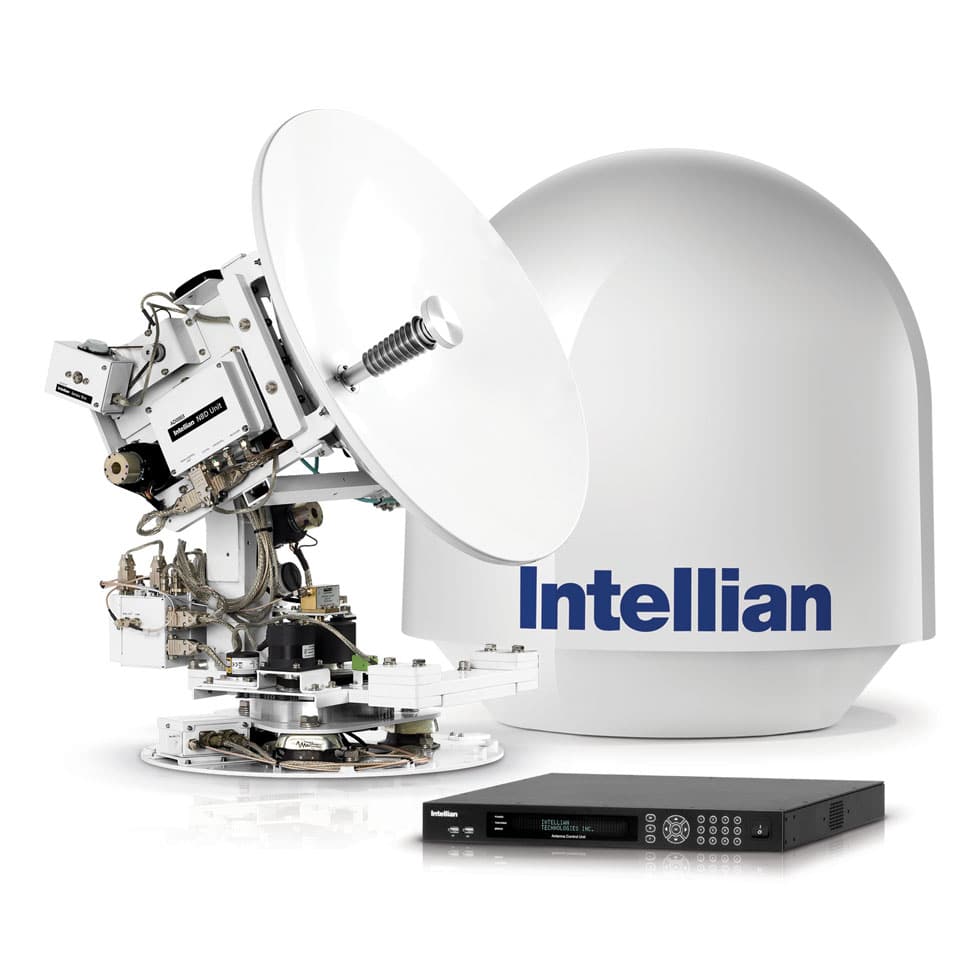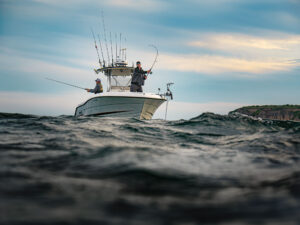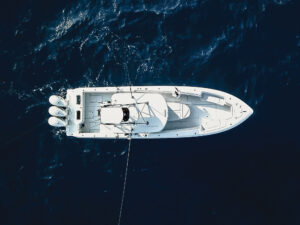[Be sure to click through all the images in the gallery above.]
Sometimes, I have a hard time being so connected. I want to turn off the constant input, take a boat out 100 miles and drift through the night: no sensory feedback save celestial light. But just as I type that, I think about an e-mail I’m hoping for or the Facebook photo of my new grandniece. Digital runs through our veins now — like it or not.
So, what if I am out on that boat at night, setting a few deep baits for swordfish? What if I catch one and want to tweet a photo? What if I want to look at online sea conditions? What are my Internet options?
Paul Comyns, vice president of global marketing for Intellian, boils it down to this: “There are two or three ways to get Internet on board. First is the conventional way, through marina Wi-Fi, cellular AirCard or a smartphone. But most people want a connection a bit farther offshore.” And that’s where satellite communication shines.
You’d think that somewhere online you could find all the cogent information on such a crucial topic in our digital times. But in fact, Comyns says, “that’s the most asked question we hear at boat shows: How can I get Internet on board?”
Polar Options: Access Nearshore or Global
Comyns points out the major gap between what’s available nearshore (and relatively inexpensive) versus globally (which costs more). Cellular-signal strength varies, but anglers often report that their connection drops about five miles from shore. Wi-Fi is very limited, even with signal boosters, to about a mile and a half from the land-based hot spot.
Most offshore saltwater fishermen fall into the chasm between needing more than a five‑mile range but less than “everywhere” coverage. However, as tablet use grows, even nearshore anglers want an Internet connection. For those anglers, and the ones with enough disposable income, many options exist.
First and most obvious for nearshore anglers: the cellular data service available on some tablets, or a wireless-Internet card for a laptop. Both carry monthly-subscription costs. Shakespeare Marine Products, which debuted its CruiseNet system several years ago and then discontinued it, has said that it plans to reintroduce a more robust version of the cell-based system by press time.
CruiseNet uses a cellular signal and a router to create an onboard Wi-Fi setup. Because of Shakespeare’s external antennas — usually mounted high on the vessel — coverage can extend beyond five miles, but it’s still highly variable. The system is expected to cost $999.95.
Noncellular solutions — including those from Digital Yacht and Amped Wireless — involve long-range Wi-Fi products that reach out greater distances to find a land-based signal. Digital Yacht’s products start with the $140 WL60, made for small boats, with up to about a half-mile range.
The WL410 ($500) reaches out about a mile, and the WL510 ($750) offers about five miles of coverage. The 510 also can function as a networking device; when it’s attached to a router, such as the company’s iNavHub ($500), it allows a shared connection among various devices. iNavHub also comes with an NMEA interface for connecting to your boat’s engine-data source and for use with apps like iNavX.
Amped Wireless makes the new UA600EX ($99), a high-power adapter that connects to a computer via USB. With a high-gain directional antenna, it can increase the Wi-Fi range of your PC by three or four times.
Internet Access for Offshore Anglers
For anglers who run many miles out to canyons, to the east side of the Gulf Stream or to offshore rigs, a number of satellite-based products provides Internet service. While that service could be considered very slow (about 12 to 15 kbps for handheld sat phones) based on today’s broadband standards, satellite-communication providers have partnered with compression-software companies to streamline transmissions. Many of today’s websites have developed mobile versions that strip out images and video.
As a result, data can transfer at about 56 kbps via some handhelds, such as Globalstar’s new GSP-1700, and accelerates to more than 4 mbps for some fixed units with powerful antennas. As an example, says Joel Thompson, Iridium’s vice president of product management, 15 kbps translates to about 10 to 15 e-mails per minute. A handheld sat phone costs $1,000 or more, and basic-use rates average about $.80 to $1.50 per minute.
Iridium also offers its AxcessPoint Connect system, which turns a laptop into a Wi-Fi hot spot for the boat. Globalstar, which is poised to finish its launch of upgraded satellites this summer, works with a third party to offer a similar vesselwide wireless network. The setup allows multiple users to connect tablets, cell phones and computers. That provider also created an app to optimize data transfer — a 1 MB upload can take as little as four minutes.
With even faster speeds comes higher cost — which is certainly understandable, since satellites cost millions of dollars to launch and maintain. Inmarsat’s FleetBroadband service, which Intellian provides its customers, offers speeds of 148, 250 and 500 kbps with a fixed-mount satellite phone.
The average usage cost for the FB150 (148 kpbs) would total about $300 per month, Comyns says, citing a friend’s experience. “It’s best for downloading GRIB (weather) files, uploading text e-mails, and for voice calls. It’s not designed to do Skype or constantly check a Facebook page,” he says.
A step up from that system, VSAT (very small aperture terminal) offers true broadband satellite communication. Instead of paying per byte or the time spent on a connection, the primary usage cost is the bandwidth, or “the pipe,” Comyns says. A half-megabyte pipe costs about $400 a month; prices increase to about $4,000 a month for the maximum 4 MB pipe. The system also requires an antenna. The smallest version — at 60 cm — costs $25,000.
Better Onboard Internet Connections
Consumers eventually will see enhanced coverage as demand increases. Iridium plans to launch new satellites over the next two years that should drive up data speeds. Inmarsat says it’s working on creating lower-cost terminals and airtime usage for the average consumer.
“The driver [on the cell side] is that there are not enough users at the moment to make any changes to cell-phone signals,” Comyns says. “Cell-phone companies don’t communicate out at sea. They’re worried about the millions of people moving up and down the highways.”
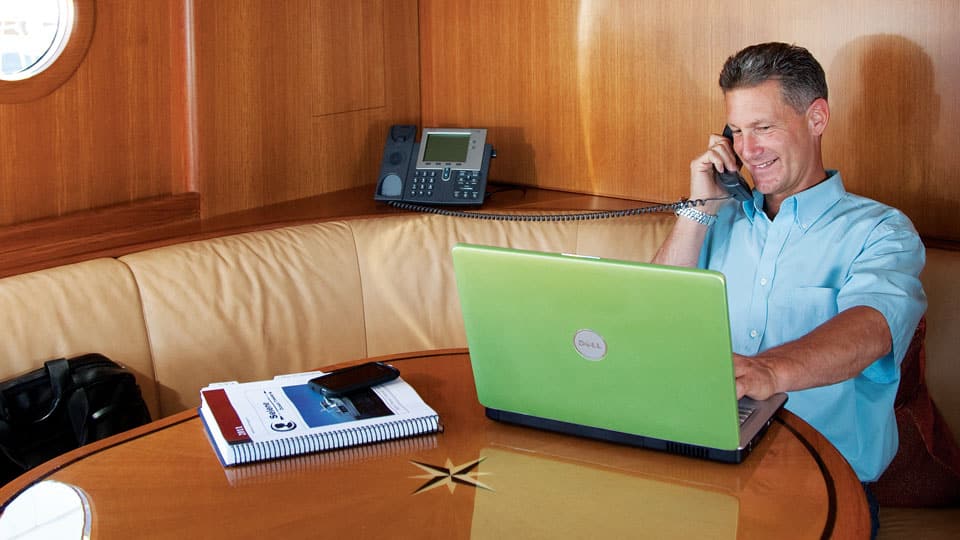
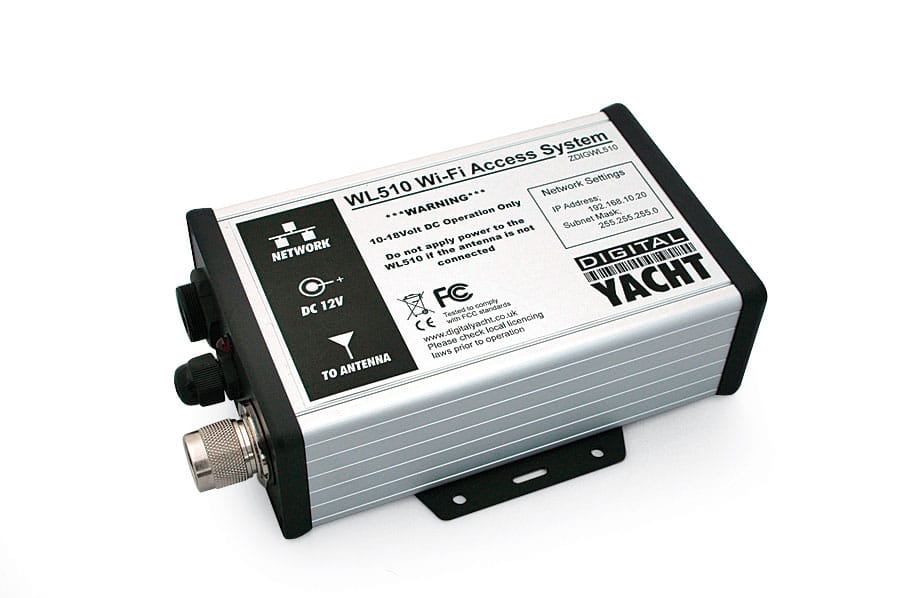
Digital Yacht’s WL510 long-range Wi-Fi product offers about five miles of coverage and functions as a networking device when attached to a router.
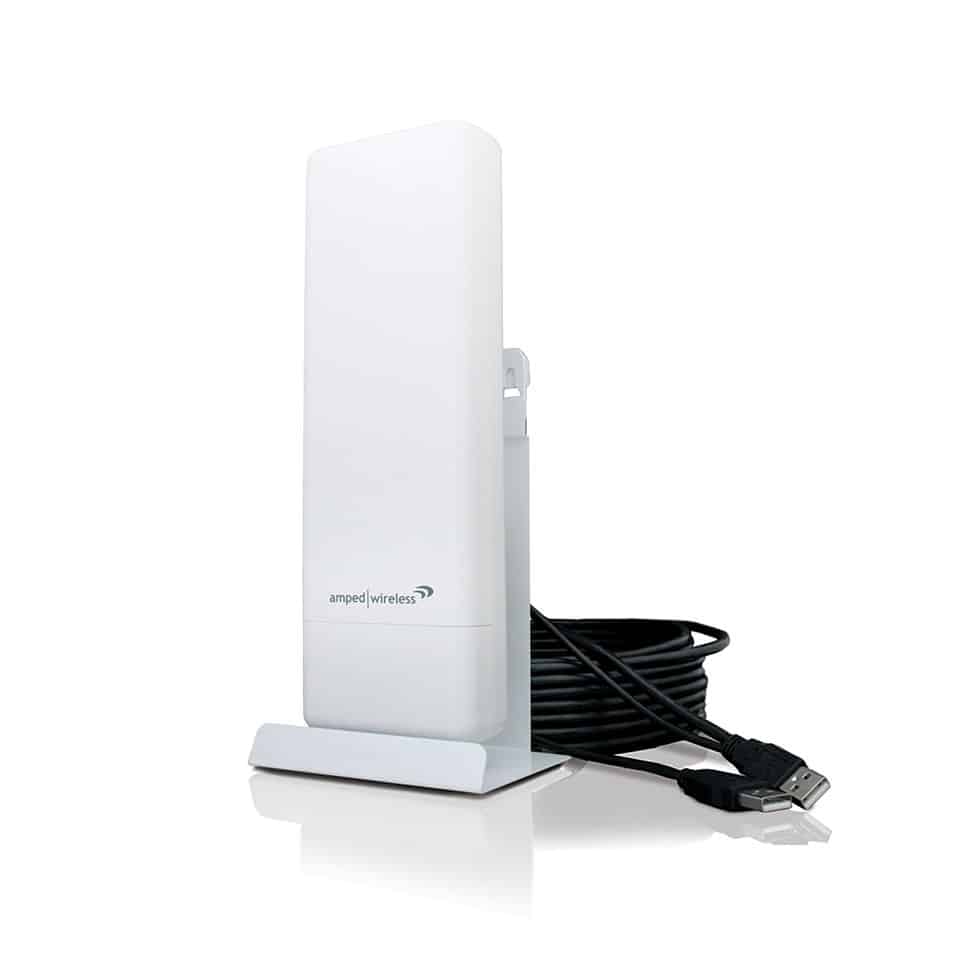
Amped Wireless’ UA600EX high-power adapter connects to a computer and increases its Wi-Fi range — usually a matter of yards — as much as three to four times.
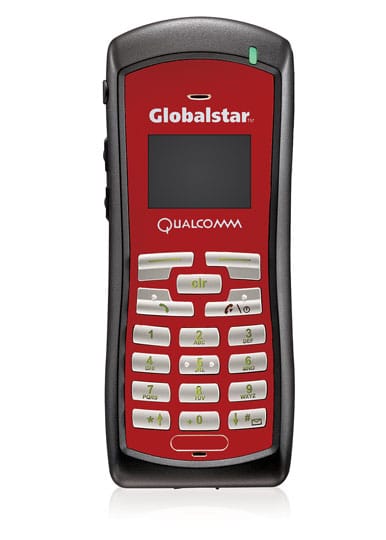
Globalstar GSP-1700 handheld sat phone
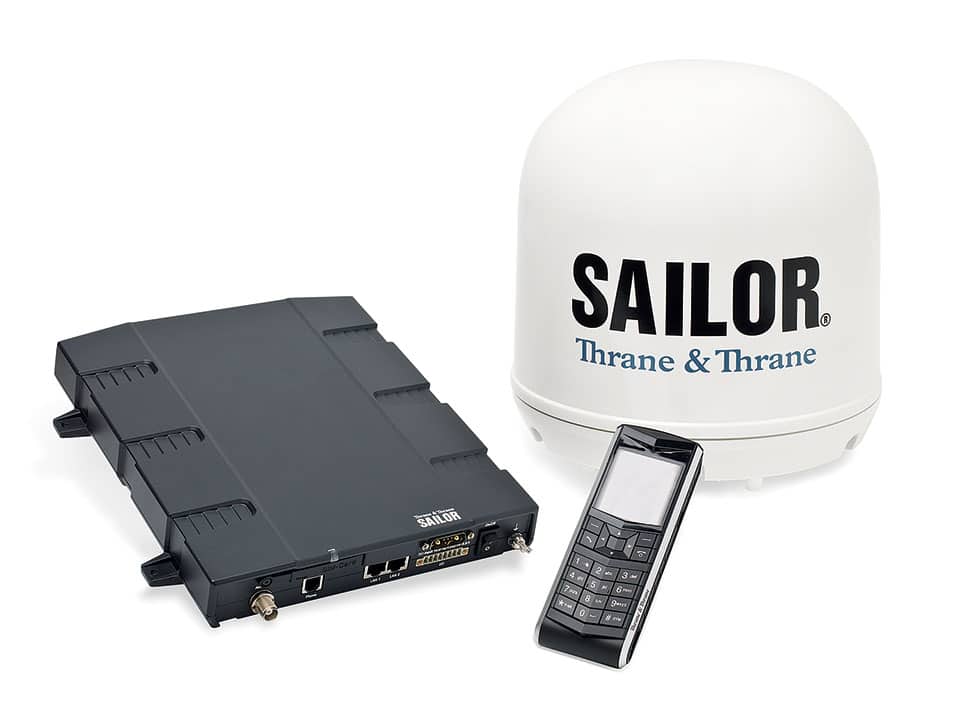
Inmarsat offers a range of satellite-phone and internet products, including this Fleet Broadband 150 system that can be hard-wired to a laptop.
